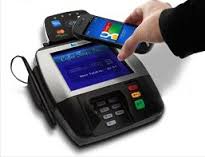 Hyped as the new way to pay, Apple Pay has seen a slow start since it launched last fall. We even questioned, Is Apple Pay an In-Store Payment Failure?
Hyped as the new way to pay, Apple Pay has seen a slow start since it launched last fall. We even questioned, Is Apple Pay an In-Store Payment Failure?
According to a recent report from Reuters:
While some of the country’s top merchants said they use and like the mobile payment system, fewer than a quarter of the retailers said they currently accept Apple Pay, and nearly two-thirds of the chains said categorically they would not be accepting it this year. Only four companies said they have plans to join the program in the next year.
So why are retailers not accepting Apple Pay? Here are the top reasons:
- Not enough customer demand
- Limited access to customer data
- High price for the technology to implement it
As Apple Pay fails to gain enough market share competitors like Android Pay, Samsung and CurrentC are ready to replace it.
- Google recently relaunched their NFC payments platform, separating it from the Wallet as it’s own Android Pay offering. Because Google does not charge transaction fees like Apple, it does not require the same payment processor back end integration and provides broader acceptance at all NFC enabled terminals.
- Samsung has their own Samsung Pay technology built into their phones and smart watches, which enables not only NFC based transactions, but also works with existing magnetic stripe readers, offering far broader acceptance. Their service is expected to be unveiled in September.
- CurrentC, a mobile wallet set to debut this summer, was created by MCX. Over 20 retailers are part of this coalition to challenge Apple Pay. CurrentC’s advantage over Apple Pay is a more robust data collecting system for retailers and a cheaper back end cost, but as MCX retailers begin to embrace Apple Pay, their own platform may be in jeopardy.
Who will dominate mobile payments in the future remains to be seen, but we can help you keep track of this horse race and other mobile trends impacting your business. Get weekly mobility updates by signing up for our email list.






